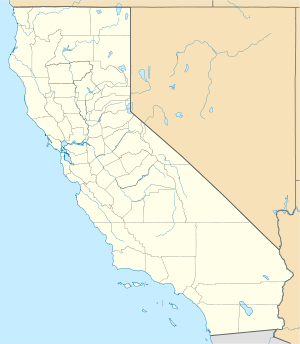
Back آر إم إس كوين ماري Arabic Queen Mary Catalan RMS Queen Mary Czech RMS Queen Mary Danish Queen Mary (Schiff, 1936) German RMS Queen Mary Spanish Queen Mary Estonian RMS Queen Mary Basque RMS Queen Mary Finnish Queen Mary French
 Queen Mary at Long Beach, California, in 2010
| |
| History | |
|---|---|
| Name | Queen Mary |
| Namesake | Mary, Queen of the United Kingdom |
| Owner |
|
| Port of registry | Liverpool |
| Route | Southampton, New York, via Cherbourg (normal transatlantic voyage East and West bound) |
| Ordered | 3 April 1929 |
| Builder |
|
| Yard number | 534 |
| Laid down | 1 December 1930 |
| Launched | 26 September 1934 |
| Sponsored by | Queen Mary |
| Christened | 26 September 1934 |
| Maiden voyage | 27 May 1936 |
| In service | 1936–1967 |
| Out of service | 9 December 1967 |
| Identification |
|
| Fate | Ship hotel and museum |
| Status | Docked, Long Beach. |
| General characteristics | |
| Type | Ocean liner |
| Tonnage | |
| Displacement | 77,400 long tons (78,642 metric tons) |
| Length | |
| Beam | 118 ft (36.0 m) |
| Height | 181 ft (55.2 m) |
| Draught | 38 ft 9 in (11.8 m) |
| Decks | 12 |
| Installed power | 24 × Yarrow boilers |
| Propulsion | |
| Speed |
|
| Capacity | 2,140 passengers: 776 first (cabin) class, 785 cabin (tourist) class, 579 tourist (third) class |
| Crew | 1100 |
RMS Queen Mary | |
| Coordinates | 33°45′11″N 118°11′23″W / 33.75306°N 118.18972°W |
| NRHP reference No. | 92001714[2] |
| Added to NRHP | 15 April 1993 |
RMS Queen Mary[3] is a retired British ocean liner that sailed primarily on the North Atlantic Ocean from 1936 to 1967 for the Cunard Line and was built by John Brown & Company in Clydebank, Scotland. Queen Mary, along with RMS Queen Elizabeth,[4] was built as part of Cunard's planned two-ship weekly express service between Southampton, Cherbourg and New York. The two ships were a British response to the express superliners built by German, Italian and French companies in the late 1920s and early 1930s.
Queen Mary sailed on her maiden voyage on 27 May 1936 and won the Blue Riband that August;[5] she lost the title to SS Normandie in 1937 and recaptured it in 1938, holding it until 1952, when it was taken by the new SS United States. With the outbreak of World War II, she was converted into a troopship and ferried Allied soldiers during the conflict. On one voyage in 1943, she carried over 16,600 people, the still-standing record for the most people on a vessel.
Following the war, Queen Mary was refitted for passenger service and along with Queen Elizabeth commenced the two-ship transatlantic passenger service for which the two ships were initially built. The two ships dominated the transatlantic passenger transportation market until the dawn of the jet age in the late 1950s. By the mid-1960s, Queen Mary was ageing and was operating at a loss.
After several years of decreased profits for Cunard Line, Queen Mary was officially retired from service in 1967. She left Southampton for the last time on 31 October 1967 and sailed to the port of Long Beach, California, United States, where she was permanently moored. The City of Long Beach bought the ship to serve as a tourist attraction featuring restaurants, a museum and a hotel. The city contracted out management of the ship to various third-party firms over the years. It took back operational control in 2021.
- ^ Watton, p.10.
- ^ "NPS Focus". National Register of Historic Places. National Park Service. Archived from the original on 25 July 2008. Retrieved 7 September 2011.
- ^ National Register of Historic Places Registration Form, National Archives, 17 November 1992, retrieved 1 October 2023
- ^ "1938 newsreel of shipyard construction". British Pathé.
- ^ "Remarkable things you didn't know about the Queen Mary ocean liner". The Telegraph. Archived from the original on 11 January 2022. Retrieved 14 August 2017.
© MMXXIII Rich X Search. We shall prevail. All rights reserved. Rich X Search

